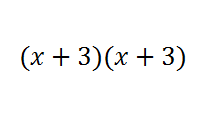A great example was done in our class this week where we had to figure out how many classrooms a billion empty shopping bags would fit into. To help solve the problem we were given measuring tape, about 20 shopping bags and a container. Our group decided that we would fill the container given with as many shopping bags possible, then measure the dimensions (length, width and height) of both the container and the classroom. Once we found how many bags could fit within the small container we compared the volume of the container containing the bags to the volume of the classroom. A ratio was then done to show how many bags would fit in 1 classroom. Since 1 billion bags would not fit into just one classroom we found how many more classrooms would be required. It was found that about 225 classrooms would be required to fit 1 billion shopping bags.
This question was interesting because it addressed a variety of topics such as:
- Measurement
- Calculation of Volume
- Environmental implications
- Ratios
Figure retrieved from: http://images.teamsugar.com/files/users/6/61259/33_2007/Carrier_bags.jpg
Students are able to use what they have learned within the classroom to solve problems such as these that provide a real-world context.
With that being said, the development of these types of questions may not always be easy. A question such as the one shown above requires the students within your class to be quite familiar with a variety of topics. Some classrooms may struggle with the complexity of problems such as the one above and need more guidance. Because every classroom is different, it is important to develop questions with context that can be solved by the students within your classroom based on the knowledge of your students assessed by the teacher. If you are looking for more real-world type math problems an excellent website to check out is http://www.realworldmath.org/ which has a variety of lessons for teachers to help teach certain topics with questions that give real-world contexts.
Figure retrieved from: http://www.realworldmath.org
Not all context questions require an activity to be performed though. There are many other ways in which teachers can accommodate context into their classroom. The first way is through a "hook" at the beginning of a lesson, A hook is used to generate student interest on a certain topic and can be done in different ways such as an activity, a video, a discussion, etc. Providing a context within that hook allows students to see why it is important to learn the topic that they are about to cover and also may increase classroom engagement.
Overall, providing a meaningful context to mathematical problems can help improve student engagement within the classroom but the way that context is taught should be based on the needs of your students.
What do you think about the importance of context within our classrooms?









